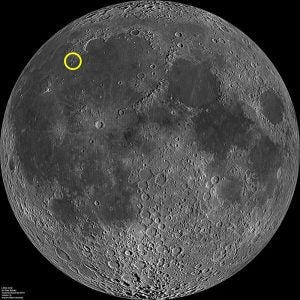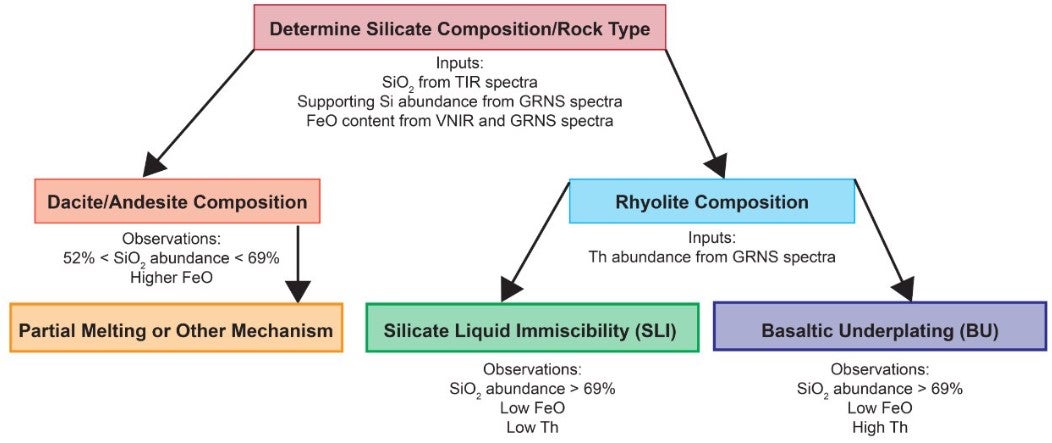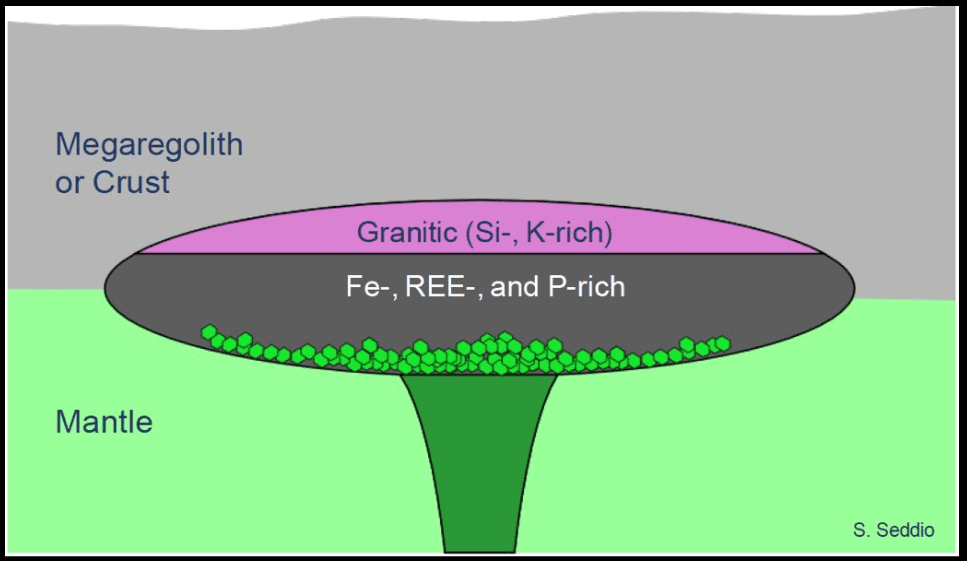About the Gruithuisen Domes
Image credits: NASA/GSFC/ASU
Mysterious Magma
The presence of silicic (pronounced “suh-LIS-ik”) rocks on the Moon contradicts much of what we know about silicic volcanism on Earth. Terrestrial volcanoes that produce silica-rich magma are commonly formed when one tectonic plate slides beneath another (also called subducting), particularly when an oceanic plate slides beneath a continental plate. A good example of this is Mount St. Helens, a silicic volcano located on the Pacific coast in Washington.
(A) LROC WAC image of the Gruithuisen Domes region and (B) Diviner Christiansen feature (CF) map of the Gruithuisen Domes showing the domes are unique from their surrounding maria. Adapted from J.-P. Williams et al. 2025
Spacecraft observations from previous missions suggest that the Gruithuisen Domes, located on the rim of Imbrium basin on the Moon’s nearside (the side of the Moon we see from Earth), are in the small percentage of the Moon’s crust that formed when magma with high silica content erupted onto the surface and cooled to form a silicic volcanic feature.
Since we know there has never been plate tectonics or large abundances of water on the Moon, lunar silicic magma must have formed another way.
Lunar-VISE will unlock clues to the Moon’s past and help researchers solve the mystery of silicic volcanism on the Moon.
The Formation Hypotheses
Based on laboratory studies of samples returned by the Apollo astronauts and spacecraft observations lunar silica-rich volcanic features, scientists have come up with two hypotheses for how silicic volcanic features form on the Moon.
Hypothesis 1: Silicate Liquid Immiscibility (SLI)
If the Gruithuisen Domes formed from SLI, Lunar-VISE would expect to find compositions that are high SiO2 abundance but low in FeO and Th.
Hypothesis 2: Basaltic Underplating
The second hypothesis, called Basaltic Underplating, is when a basaltic magma rises from the lunar mantle up towards the crust but its migration upwards stalls at the base of the crust because the basaltic magma is denser than the crust. The stalled magma can pool up at the base of the crust and begin melting it. This melt is less dense than the crust allowing it to rise up and erupt onto the surface forming silica-rich features.
If the Gruithuisen Domes formed from Basaltic Underplating, Lunar-VISE would expect to find compositions that are high SiO2 and Th abundance but low in Fe.






